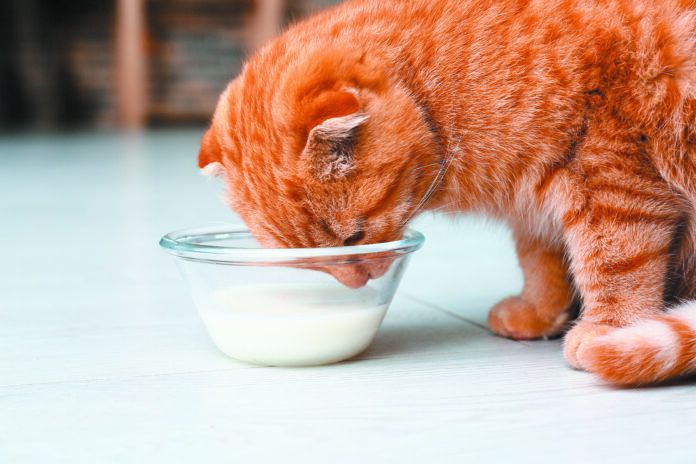Just because something is repeated very often doesn’t necessarily mean it’s true. And when it comes to cats, commonly held misconceptions can interfere with your bond with your pet, and even her wellbeing. Herewith, 12 statements about cats that are frequently accepted as truths — but aren’t.
- Milk and cats go together. Not necessarily. Most adult cats, just like all species of mammals, have some degree of lactose intolerance. In fact, the cow’s milk people give their pets has more lactose than many cats can digest easily or comfortably. Resulting symptoms include diarrhea, bloating, and flatulence. Cow milk also has more casein, the main protein in milk, than many cats can digest. That’s why it’s best not to give your cat milk, or to give it only occasionally, and in very small amounts. Two ounces of whole milk contain 30 calories — more “treat” calories than many cats should receive in a day. (See story on page 6.)
- All cats love catnip. Nope. Only an estimated 25 to 50 percent of cats react to a volatile oil in catnip called nepetalactone. If your cat doesn’t respond, he’s not a “dud.” (If he does like it, rest assured that catnip is completely nonaddictive and harmless.)
- If a cat food contains a phrase like “helps muscle function,” it means the food is better at doing that than other cat foods. Not at all. Such a claim is a structure/function claim — a labeling loophole that allows certain phrasing on packaging that actually could be applied to any food. What cat food wouldn’t help muscle function? In other words, structure/function claims are marketing ploys. Health claims are another matter, tying a specific food to a specific outcome: Feed this food, and your cat won’t get heart disease. Such claims are not allowed unless they have been proven with scientific study — which is why you rarely see a true health claim on pet food.
- Cats hate water. That blanket statement doesn’t apply. Certain cat breeds are perfectly happy in water, including the Turkish van, Turkish Angora, Bengal, Maine Coon, Abyssinian, and American Bobtail. And really, any breed of cat that has had positive experiences around water between the ages of 2 and 7 weeks — their sensitive period of learning — tends to feel okay about water, too.
- Cats are naturally nocturnal. Cats are naturally crepuscular, meaning they are most active around dusk and dawn (which is why your cat might start batting your head at 5 in the morning, demanding breakfast as well as attention).
- Cats like litter scented with honeysuckle or other odors that they enjoy. Most cats prefer their litter unscented. Cats’ sense of smell is many times keener than ours. Imagine trying to go to the bathroom overwhelmed by an odor that you might enjoy at other times.
- Cats are naturally finicky eaters. People often turn their cats into finicky eaters because they worry that they’re not eating enough, or quickly enough, and keep serving more and more enticing foods to get them to have their meals. That teaches a cat to become finicky; she doesn’t start out that way.
- A neutered male cat will no longer display sexual aggression. A neutered cat may no longer have all his parts, but his urges will not completely disappear. For that reason, some neutered male cats who live with female cats will try to mount their “sisters.” If that happens in your house, try spraying your female feline’s rump with male pheromone. It may help the male get the message that his “ardor” has been misdirected.
- Some cats just prefer to spend their days under the bed or in other places that keep them out of sight. Cats definitely like their alone time, but if your pet spends essentially all of her time by herself in out-of-the-way places, she is not emotionally comfortable in your home. Something, or someone, unnerves her, and it’s up to you to figure out what it is and try to fix the situation. Note: Sometimes staying completely out of sight is a sign that your cat is in pain and needs to see the doctor to determine what’s wrong medically.
- If your kitten has a heart murmur, she will have serious heart disease later in life. Many kittens have what is known as an “innocent” murmur that they outgrow. Murmurs are graded on a scale of 1 through 6 for loudness or intensity. If your kitten has a rating of 2 or lower, you can reasonably choose to hold off on any further testing. By one year of age, the chances are that it will not have worsened and will very possibly have disappeared.
- Indoor cats don’t need ID tags. Cats get out, even if you don’t want them to. At least 40 percent of lost cats are indoor-only pets, according to one study. Other critical numbers: Of the 3 million dogs that enter shelters each year, some 620,000 are returned to their owners; of the 3 million cats that enter shelters, only about 90,000 are returned to their owners. And about 900,000 others are put down. That’s why you should keep visible identification on your cat at all times, says the Humane Society of the United States. A stretchy, elastic-type collar that won’t let the cat get snagged and has her name and your contact information etched onto it is better than a metal tag, which can get caught on a branch or other object and come off. A microchip is a good backup, but not enough on its own. Only visible ID immediately alerts people that the cat belongs to someone.
- The most common disease among cats is feline lower urinary tract disease (FLUTD). The most common disease among cats is gum disease. That may not sound like a big deal, but gum disease, known medically as periodontal disease, allows bacteria to enter the bloodstream. That, in turn, can lead to heart, lung, and kidney disease. Fortunately, there’s something you can do to stave off gum disease, or at least slow its progress: brush your cat’s teeth at least every other day (daily is ideal, but every other day will do). That will remove bacteria-containing plaque. A veterinary dental checkup at least once a year is important, too.




